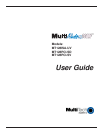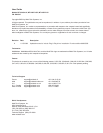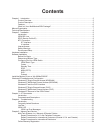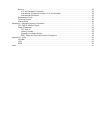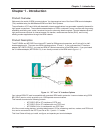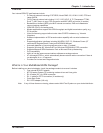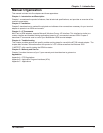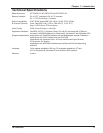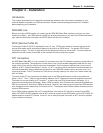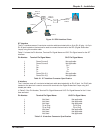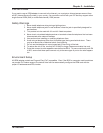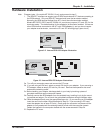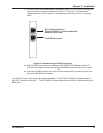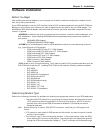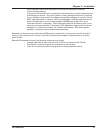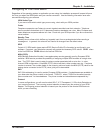
9
Chapter 2 - Installation
MT128ISA/PCI
Chapter 2 - Installation
Introduction
This chapter describes how to make all the physical and software driver connections necessary for your
terminal adapter to operate in an ISDN environment. Please check the package contents list in Chapter 1
before beginning your installation.
ISDN BRI Line
Before running the ISDN adapter, you need to get an ISDN BRI (Basic Rate Interface) line from your local
telephone company. Your ISDN service provider will provide information to you about the ISDN central switch
type, pertinent subscriber information and SPID (Service Profile ID) number(s).
SPID (Service Profile ID)
The Service Profile ID (SPID) is applicable in the U.S. only. SPIDs are a series of numbers that inform the
central office switch which services and features to provide to an ISDN device. The generic SPID format
comprises 14 digits. The first 10 digits are the main telephone number on the terminal. The last 4 digits are
dependent on the number of terminals on the interface and the services they support.
NT1 Connection
An ISDN Basic Rate (BRI) U-Loop consists of 2 conductors from the CO (telephone company central office) to
the customer premises. The equipment on both sides of the U-loop has been designed to deal with the long
length of the U-loop and the noisy environment it operates in. At the customer premises the U-loop is termi-
nated by an NT1 (network termination 1) device. An NT1 is a device which provides an interface between the
two-wire twisted-pairs used by telephone companies in their ISDN BRI network and an end-users four wire
terminal equipment. The NT1 drives an S/T-bus which is usually made up of 4 wires, but in some cases may
be 6 or 8 wires.
The name of the S/T bus comes from the letters used in the ISDN specifications to refer to two reference
points, S and T. Point T refers to the connection between the NT1 device and customer supplied equipment.
Terminals can connect directly to NT1 at point T, or there may be a PBX (private branch exchange, i.e. a
customer-owned telephone exchange). When a PBX is present, point S refers to the connection between the
PBX and the terminal. Note that in ISDN terminology, terminal can mean any sort of end-user ISDN devices,
such as data terminals, telephones, FAX machines, etc. The diagram which follows reflects interface points in
a typical ISDN network.
If your ISDN product operates with a S/T outlet interface, you need an NT1 device to connect to the ISDN
switch. MT128PCI-SD/SV adapters need an NT1 device to connect to the ISDN switch, but the MT128ISA-UV
adapter does not require NT1 device. In the UK, and in many European countries, an NT1 device is supplied
by your telephone company.



